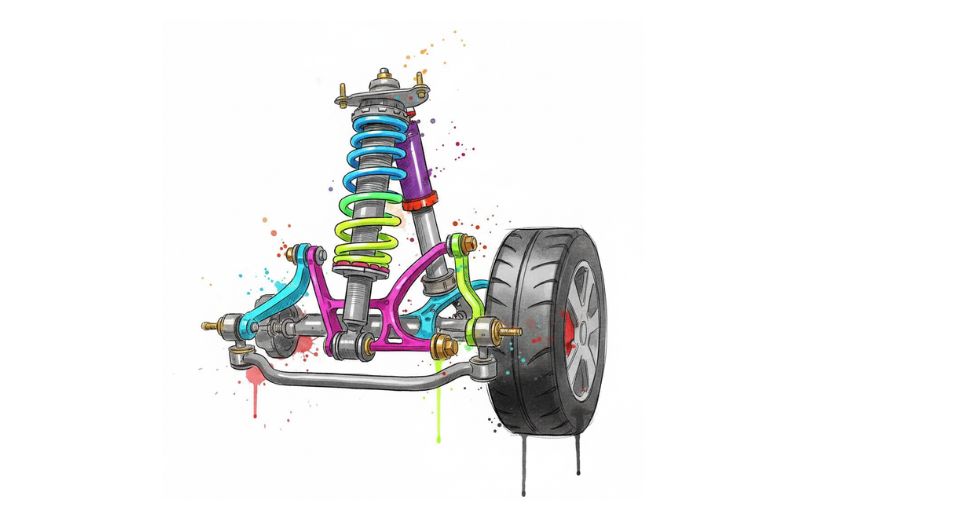
Sep 24, 2025

A smoother ride, enhanced handling, and improved road manners are common desires of motorists across all regions. The global automotive suspension market, as reported by Metastat Insight, is outlining how this desire to meet these wishes is transforming the design and engineering of automobiles in the modern era. As automobiles grow more advanced, suspension systems moved to the center of performance, fuel efficiency, and driver satisfaction, changing both daily commutes and road trips in subtle ways. What was once perceived as purely functional gear now finds itself as the groundwork for comfort, handling, and adjustability.
Road conditions are highly varied, from city clogged roads to variable rural roads, and vehicles must operate under these different conditions at all times. This need for durability, comfort, and safety is still challenging the auto manufacturers. Meanwhile, the emergence of electric and connected cars puts new demands on suspension technologies. Conventional configurations are no longer adequate to meet expectations of stability, ride quality, and integration with other onboard components. In this environment, sophisticated suspension technologies are becoming a critical tool for manufacturers looking to differentiate products and respond to increased consumer expectations.
Essentially, a suspension system serves to absorb shocks, maintain tire contact, and offer stability across any terrain. Modern solutions now extend far beyond these inherent functions.
Adaptive systems can adjust stiffness or damping in real time, offering ride to suit both smooth roads and bad pavement. Lightweight materials and small size also allow greater efficiency goals, keeping pace with the trend toward energy-lowered vehicles. For the user, they mean greater comfort, less driver fatigue when covering long distances, and enhanced safety through improved handling. For manufacturers, advanced suspension is a path to innovation without compromising on reliability.
The development of suspension systems has been characterized by incremental change. Early products were based on minimum durability with minimal tolerance for differing conditions of driving. Advances in materials and electronic control technology introduced a new era of progress.
Electronic dampers, air suspension, and active systems were a few of the advances that substituted passive elements with more intelligent solutions that could learn and customize. The limits of what can be done with suspension have been extended further with every new generation of technology, enabling it to be integrated with navigation data, sensors, and advanced driver assistance features. Today, the evolution extends further as the engineers experiment with predictive suspension systems that predict road changes before they take place.
Upgradation of advanced suspension technologies is robust particularly in markets where customer demand accords high importance to premium driving quality and high levels of safety. Advanced automotive ecosystems within these markets enable the rapid adoption of innovative systems by established suppliers combined with a competitive manufacturing base.
At the same time, developing markets are increasingly displaying rising demand as infrastructure outlays and car ownership rise. These markets, which were long price-sensitive, are now opening to more advanced technologies as requirements shift and domestic manufacturers pursue global competitiveness. The collective effect is a broadening geographical reach for advanced suspension solutions across the board.
Despite significant progress, there are also problems. Excessive production costs and difficulty in integrating advanced suspension systems into larger vehicle platforms can limit adoption. Competitive forces also prevent manufacturers from differentiating without increasing costs.
It also requires region-specific solutions and variation in road conditions that render global standardization difficult. Those problems come with substantial opportunities, however.
Emerging materials and production technologies can push the costs downwards in the long run. Partnerships with technology providers make it possible to have smarter, more networked suspension systems in line with the direction towards digitalization of vehicles. Forays into fast-growing markets for vehicles also take increased momentum, indicating latent potential both for manufacturers and suppliers.
Suspension technology is where safety, comfort, and efficiency intersect a meeting point that's more salient in transport today. Broader movements toward sustainable mobility and digitalization only heighten its relevance. A suspension system that reduces energy loss, refines handling competence, and natively communicates with electronic control networks is more than a luxury; it's a core enabler of next-generation mobility.
The automotive suspension market, as represented by Metastat Insight, illustrates how these systems are not just making the drive better but are actually shaping the automotive innovation of the future. As global demands put on the vehicle grow, suspension solutions become silent but dynamic leaders toward more intelligent, more efficient, and more environmentally friendly transportation.
Drop us an email at:
Call us on:
+1 5186502376
+91 73850 57479